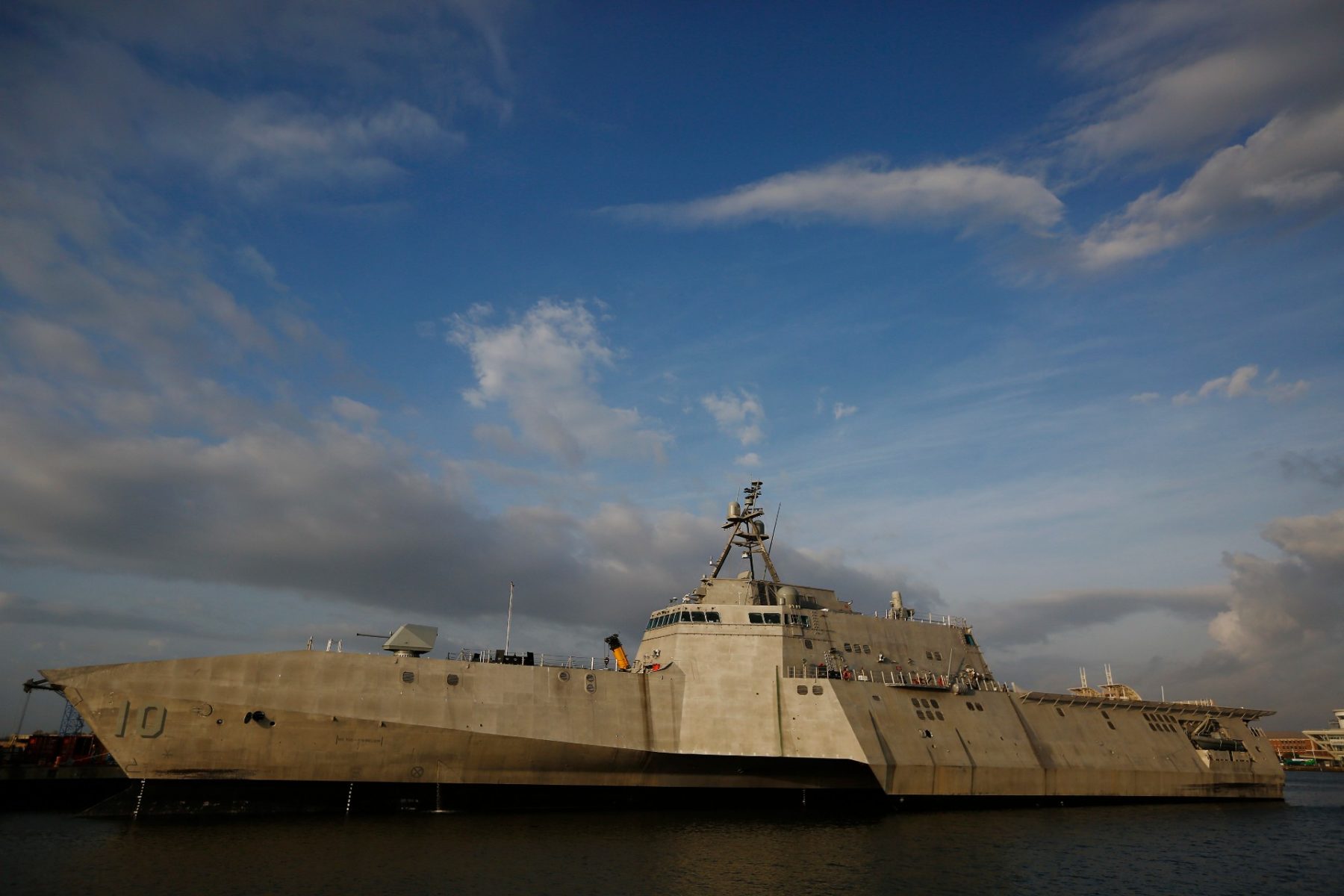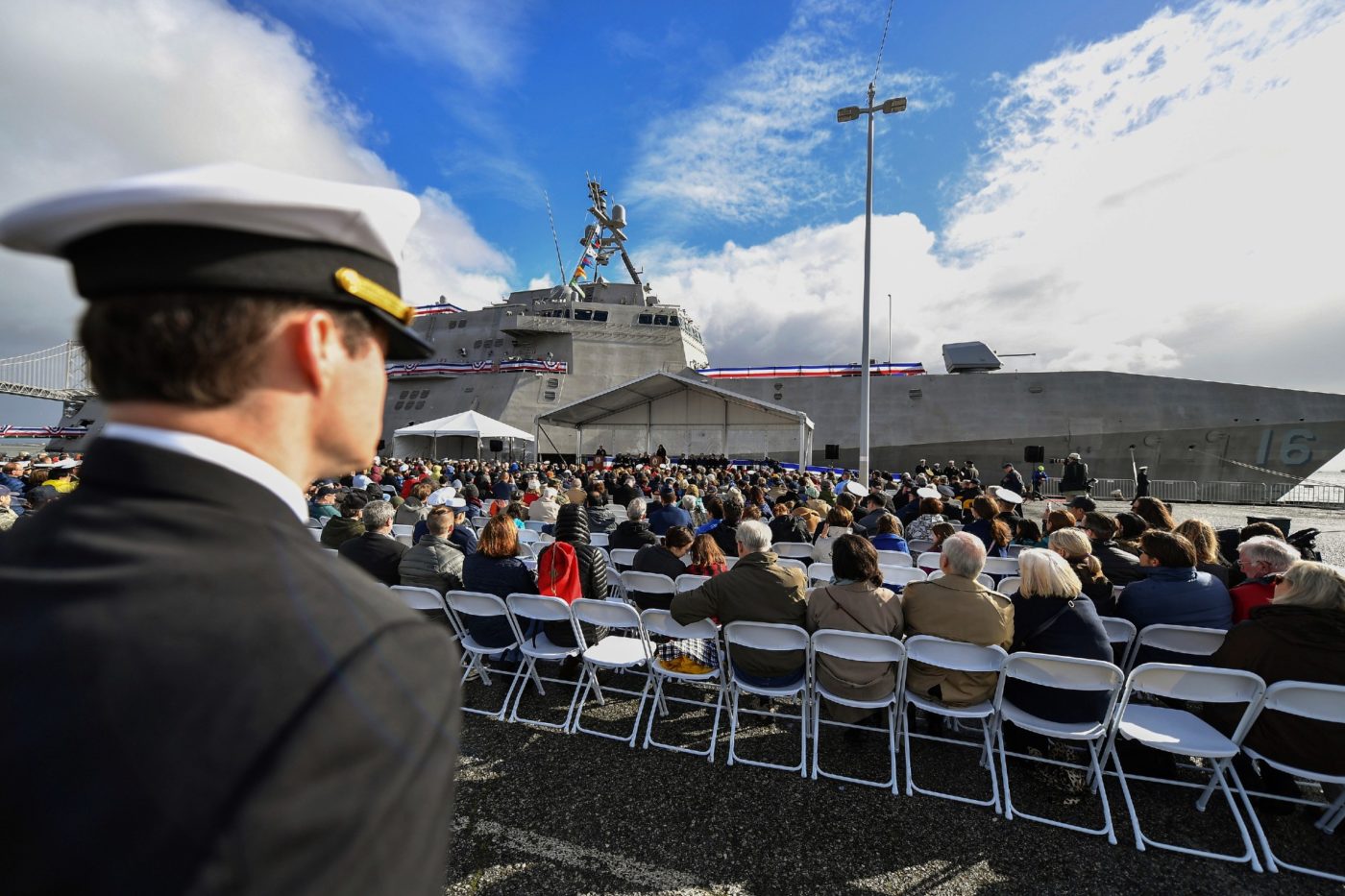
The U.S. Navy seeks to retire up to 10 Littoral Combat Ships, all extremely new, the oldest only seven years old, as first reported by Politico Pro. The ships, which had been designed for versatile uses from critical combat to maritime support roles, were expected to be in service for 25 years.
The batch of LCSs eyed for decommissioning are Freedom class, whose prime contractor is Lockheed Martin, by far the largest defense contractor in the world with a record $67 billion in revenue last year.
Last month, a Government Accountability Office report found that even after some $31 billion spent on the LCS program over 14 years, the ship, designed to operate in shallow waters close to shore, cannot perform its mission. The ships have been plagued with major issues such as a design flaw with the main diesel propulsion engine that limited its top speed to a pokey 12 knots, or about 14 miles per hour—far short of their 46 mph-equivalent target.
Other military contracting giants have stakes in the LCS program: General Dynamics holds support contracts for the Independence class ships that in recent years are worth up to $79 million. According to a history of the program by researcher Emma Salisbury, in 2005, former Rep. Roscoe Bartlett (R-Md.), who was then head of the projection forces subcommittee of the House Armed Services Committee, raised concerns that the LCS concept was “immature,” but Lockheed launched a Beltway lobbying campaign to keep the LCS from being disfavored—or axed—in the U.S. House’s spending plans.
In 2018, the Pentagon acknowledged that “Neither LCS variant is survivable in high-intensity combat,” contributing to the unfortunate nickname, “Little Crappy Ship.” Each LCS is expensive to operate, by one calculation costing around $70 million annually, close to that of the more-established Arleigh Burke-class warship. Still, more LCSs are in the construction and delivery pipeline, even after the first LCS was quietly decommissioned last year.
The watchdog group Project on Government Oversight (POGO) says that the initial cost estimate of an LCS jumped from $220 million to an actual cost of $600 million as of 2020. If 10 LCSs are retired in the FY 2023 budget, at least $6 billion worth of ships will be mothballed, about 12 years before expectations.
The campaigns of lawmakers in both parties who are most responsible for expanding the Navy’s LCS fleet over the years have been heavily funded by military contractors with LCS contracts.
The Subcommittee on Seapower and Projection Forces has jurisdiction over Navy and Marine Corps acquisition programs, as part of the House Armed Services Committee, and is chaired by eight-term Rep. Joe Courtney (D-Ct.), whose top career contributors have been General Dynamics ($242,705) and Raytheon ($160,800), according to OpenSecrets. [This post has been corrected below to clarify the role of General Dynamics in its computing systems contracts on Independence-class LCSs over the past decade.—ed.]
Last year, Courtney said the troubled LCS program was an example of congressional authorizations where “we are still to this day dealing with investment decisions, which with the benefit of hindsight, might’ve gone in a different direction.” Last cycle, Lockheed’s PAC contributed $10,000 to Courtney’s re-election, and Courtney’s career haul from the defense industry is a hefty $977,200 in OpenSecrets’ records.
The second-most senior Democrat on the subcommittee is retiring Rep. Jim Langevin (D-R.I.), whose top career contributors are also General Dynamics ($242,375) and Raytheon ($144,105) in the OpenSecrets tally, as well as defense contractor Northrop Grumman ($84,300). Last year, Rep. Langevin joined Courtney in supporting the Navy’s fleet expansion, including into unmanned maritime systems, while calling for better planning. Another senior Democrat on the subcommittee, Donald Norcross of New Jersey, has received $59,500 over his career from the PAC of contractor L3Harris, which develops a geo-based visualization package for the LCS.
[Get the free Brick House newsletter.]
The top career contributors to ranking subcommittee member Rep. Rob Wittman of Virginia have been shipbuilder Huntington Ingalls ($154,160), followed by several top defense contractors including Lockheed Martin ($78,425), according to OpenSecrets. Last May, Wittman called for continued high levels of defense spending—higher than the Biden administration had initially proposed—which congressional lawmakers did end up authorizing.
In 2017, when Wittman was ranking member of the seapower subcommittee, the panel directed the Navy to purchase 13 ships, up from the branch’s request of eight, including two additional LCSs. Courtney told Inside Defense at the time that the White House’s request for eight ships was being “tossed to the side” by the committee.
The second-ranking Republican on the subcommittee, Rep. Vicky Hartzler of Missouri, has received $64,000 over her career from the PAC of Northrop Grumman, which celebrated the LCS program and which has raked in money in recent years from contract modifications to the program. Raytheon’s PAC has given a total of $34,000 to subcommittee member Trent Kelly of Mississippi, who signed a letter last year calling for a “robust Navy shipbuilding budget” to keep pace with China.

On the Senate’s Subcommittee on Seapower, which has jurisdiction over Navy and Marine corps procurement, second-highest ranking member Sen. Roger Wicker (R-Miss.) has received $685,000 in career donations from the defense industry. Subcommittee chair Sen. Mazie Hirono (D-Hawaii) has received $260,000 over her career from defense interests.
Lockheed Martin spent over $14.4 million lobbying the federal government last year, including on the issue of Navy and Marine corps programs in the National Defense Authorization Act for Fiscal Year 2022. General Dynamics spent over $11.1 million on lobbying, touching on issues including “Navy ship repair” and “Army, Navy procurement; R&D.” In fiscal year 2016, the two defense contractors had 114 federal lobbyists who had traveled through the revolving door from government positions, according to the “Brass Parachutes” report from POGO.
Altogether, the lobbying and influence efforts of private weapons makers contribute to an ever-rising Pentagon budget—larger than the next 11 countries’ military budgets combined—that puts more resources into the military and war than into K-12 education, affordable housing, public health, scientific and medical research, early childhood education and care, and homelessness combined. In a 2019 report, the Poor People’s Campaign Moral Budget identified $350 billion in potential cuts to militarized spending, an amount equal to nearly half of that year’s $716 billion national security budget.
For more muckraking, get the free Sludge newsletter.
Correction, March 29, 12pm ET: The Independence-class LCS was historically led by General Dynamics as prime contractor, but Alabama-based shipbuilder Austal USA has been designated the prime contractor on Independence ships since December 2010, and General Dynamics has support contracts to build the ships’ computing systems. The General Dynamics Electric Boat subsidiary that is headquartered in Groton, CT builds submarines, and Rep. Joe Courtney’s recent comments to Defense News were primarily regarding submarine building capacity.
